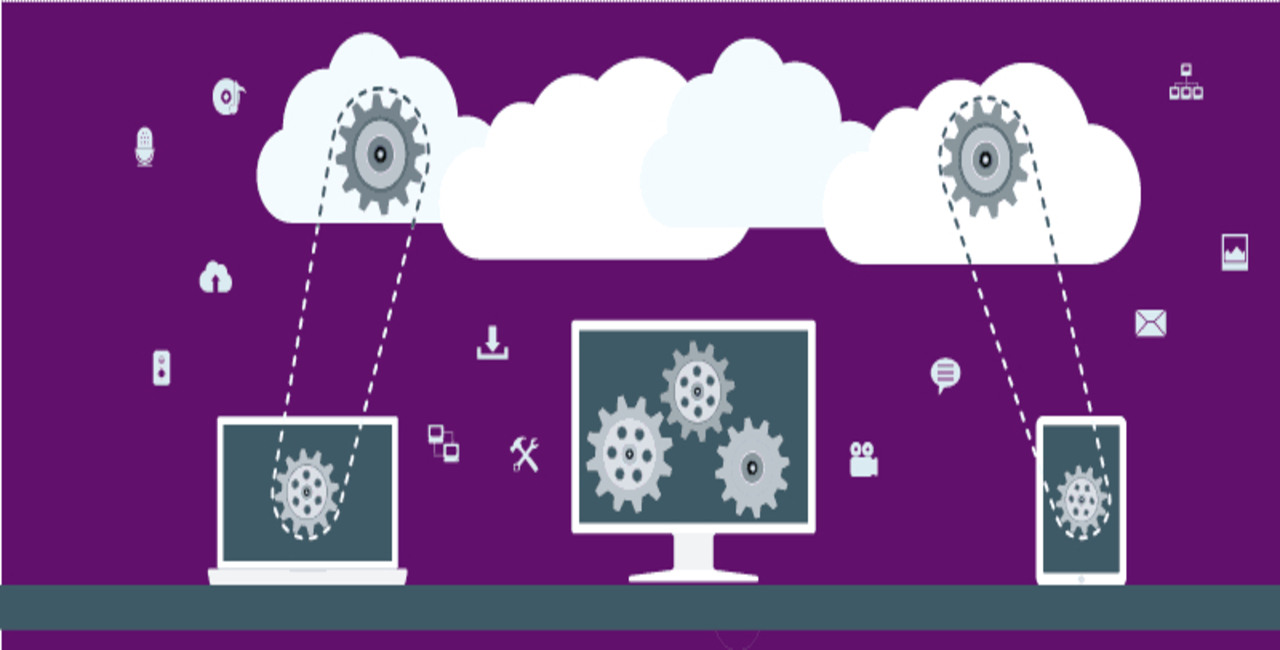
For enterprise EPCs, cloud-based solar design software delivers unmatched scalability, collaboration and workflow continuity. Desktop tools offer precision but fail to support multi-team collaboration, version control, centralized data or enterprise scaling which makes cloud workflows the superior choice for fast-growing EPCs.
Growing EPC companies have reached a turning point. local workstation solar design methods once reliable now struggle to keep up with rising project counts, shorter design cycles, multi-location teams and complex commercial portfolios. Meanwhile cloud platforms are shaping a new workflow that offers faster delivery, greater accuracy, fewer revisions and consistent results regardless of team size or location.
The real question is no longer whether cloud tools will replace desktop technology. The real question is how quickly EPCs will transition to a workflow that supports scale repeatability and competitiveness in a rapidly changing market.
The modern EPC landscape looks dramatically different from even a few years ago. Project demand continues to grow across residential, commercial and utility-scale developments. Sales cycles are shorter and customers expect polished proposals faster than ever with design accuracy that leaves no space for revisions.
Teams are no longer located in a single office. Regional branches, remote salespeople and distributed design specialists must work together in real time. The workflow that once relied on local files or manual handoffs cannot support this new environment. Every pause adds cost and every repeated revision reduces trust and profit.
Commercial and industrial scale complexity adds new layers of technical planning. Multi-roof modeling, shading studies, multi-inverter configurations and energy yield optimization require precision that must also fit inside a fast moving customer journey. EPCs today must operate with both engineering depth and commercial speed. That balance is impossible without centralization and consistency.
A scalable solar design workflow empowers EPCs to maintain speed, accuracy and repeatable standards. It creates a unified design experience from concept to proposal to installation documentation. It ensures that teams do not redesign the same system multiple times and that every proposal meets internal standards. Centralized data becomes the foundation for enterprise performance.
The new competitive advantage is not only engineering skill. It is the ability to deliver reliable project outcomes at scale with continuity across regions, teams and project types.
Cloud solar design workflows represent a major shift in how solar projects are designed, reviewed and approved. Instead of relying on software installed on each computer, teams access a shared web platform that connects everyone to the same files, templates and project history.
Updates are automatic and require no action from users. There is never a need to install patches or wait for new versions. The platform remains current for every user without delays or compatibility concerns.
Real-time syncing enables multiple team members to work on one design or proposal instantly. Collaboration becomes natural instead of forced. Designers, sales representatives and leadership can review changes as they happen which eliminates long back-and-forth cycles and miscommunication.
Cloud platforms also offer total location freedom. Work continues whether a user is in the office, onsite in another region or traveling. A laptop or tablet is enough to complete tasks that once required powerful machines.
Another major benefit is performance independence from hardware. Cloud software runs heavy calculations on remote servers. Even complex modeling or commercial-scale simulation remains smooth because the processing runs in the cloud not on a personal workstation. EPCs no longer need high-cost specialized machines or frequent replacements.
Cloud solar design workflows create an environment where teams never wait for files, never duplicate data and never lose work due to hardware failures. The result is consistent progress and enterprise continuity.
.png)
Desktop solar software has played an essential role throughout the industry. Many engineering teams rely on tools such as PVsyst for high-accuracy modeling, energy yield predictions and in-depth performance analysis. These tools remain critical for advanced engineering validation and are widely trusted for utility scale projects.
Desktop platforms also offer reliability when internet access is weak. When modeling occurs offline, the workflow remains uninterrupted even during connectivity outages. For specific tasks that require advanced simulation, desktop programs still provide unmatched control.
However, desktop systems develop significant complications when scaled across large teams or multi-region organizations. They are not built for real time collaboration and most require serial work. One person edits at a time and files must be manually transferred. This results in multiple conflicting versions and frequent duplication.
Heavy hardware dependency becomes a major operational cost. Teams require powerful computers and regular upgrades simply to maintain performance. Start-up time increases and onboarding becomes slow because each device must be configured and maintained individually.
Work is isolated on local machines which means no centralized repository, no unified audit history and no visibility at the leadership level. Errors increase over time and teams spend effort correcting rather than improving.
Desktop tools serve a purpose but they cannot scale to support enterprise growth without building layers of manual processes that drain time and profit.

Cloud workflows enable real time participation across all roles. Sales can refine proposals while design teams adjust layouts. Leadership can monitor progress instantly. Everyone works on a single living file.
Desktop workflows force sequential tasks and handoffs. Every update must be sent, saved re reviewed and reassembled which creates delays and errors.
Cloud platforms maintain a unified database of project history, templates and approvals. Version conflicts disappear. Accuracy increases and design decisions are traceable.
Desktop workflows generate multiple conflicting versions which increases the risk of incorrect builds or mismatched proposals.
Cloud tools process complex calculations in the cloud rather than on individual machines. Even large commercial simulations run smoothly on basic laptops.
Desktop platforms require expensive machines to deliver acceptable performance. Refresh cycles and maintenance inflate long-term cost.
Cloud systems include role-based access control, audit logs and consistent data handling. Leadership controls who accesses what and sensitive data remains protected.
Desktop workflows create scattered data and unmanaged files across devices.
Cloud workflows connect design and solar proposal generation which allows immediate updates. A design change updates the proposal instantly and eliminates manual transfer.
Desktop workflows require exporting and resizing which increases labor and introduces error.
Cloud supports distributed EPC operations. Teams across different regions work seamlessly.
Desktop workflows break when users are separated by distance or incompatible hardware.
Cloud platforms eliminate continuous installation, machine configuration and troubleshooting. IT maintenance decreases significantly.
Desktop systems require constant manual management and internal support.
Consider a growing EPC with ten designers thirty sales representatives and three regional offices. This organization manages multiple projects at different stages and relies on rapid approvals and consistent quality.
In a cloud workflow, all users work from a single shared project library. They access standard templates real time updates and automatic design adjustments. Proposal automation transforms designs into deliverable customer documents instantly. Every change becomes visible and every team shares identical data.
In a desktop process, files travel through long email chains. Designers receive outdated templates that require manual corrections. Sales waits for updated drafts. Regional teams struggle with time zone differences. Multiple versions float between employees and conflict resolution becomes routine.
Cloud adoption shrinks wasted time. Revisions decrease by forty to sixty percent. Design to proposal cycles become thirty to fifty percent faster. Soft operational costs fall twenty-five to thirty-five percent. The company gains the capacity to pursue more customer opportunities and improves reliability at scale.
Security remains a major concern for EPCs working with lenders, investors, corporate clients and utility partners. Desktop workflows store data on individual machines which makes security difficult to enforce and highly vulnerable to failure, theft or system corruption.
Cloud systems centralize all data under secure, encrypted access. Permissions are controlled by administrators instead of individual users. Audit logs track activity with precision. Enterprise compliance becomes achievable rather than aspirational.
For organizations managing sensitive pricing documentation, contracts, metering data and energy models, this level of control becomes a competitive requirement.
Early cost perception often favors desktop licensing. However that view changes drastically once EPCs calculate actual ownership and operation costs.
Cloud software operates through subscription which creates predictable financial planning. Hardware expenses decrease because users do not require high cost computers. Internal IT support decreases since no local installs or patching are needed. Productivity increases through time saved and reduced manual effort.
Desktop solutions accumulate hidden costs. Hardware must be replaced often. Support teams must maintain installations. Training takes longer. Manual processes produce delays and errors which affect both revenue and customer confidence.
Cloud architecture reduces both direct and indirect spending which makes it the financially intelligent choice for enterprises.

Enterprise-level solar design platforms demand modern capabilities that support performance and collaboration. These include 3D modeling that works in a real context. AI-supported layout planning and stringing that reduces manual revision cycles.
A real-time proposal builder that transforms design data instantly into customer material. Collaboration between departments through shared files and synchronized views. Controlled access with traceable activity.
Digital twin modeling for future maintenance strategy. Integration with CRM pipelines that link leads through signed contracts.
These requirements define the new standard for enterprise competitiveness.
Q1. Which system offers higher accuracy between cloud or desktop solar proposal software?
Ans. Both provide accurate results however desktop tools are typically used for deep engineering validation while cloud platforms deliver fast, accurate commercial design and proposal automation.
Q2. Which platform supports large commercial or utility-scale design?
Ans. Cloud and desktop can both support these projects however only cloud delivers scalable collaboration and version control which matters for large teams.
Q3. Is cloud-based solar design software reliable without fast internet?
Ans. Most cloud systems adapt to variable speeds and some offer offline assistance which allows work to continue without disruption.
Q4. Does desktop solar design software still have a place in 2026?
Ans. Yes desktop tools remain valuable for specialized simulation and engineering verification but not as the core operational workflow.
Q5. How do teams transition smoothly to cloud workflows?
Ans. Successful adoption begins by centralizing templates, creating standard processes and training users in real time collaboration practices.
.png)
The future of EPC operations relies on speed, accuracy and coordination across distributed teams. Cloud platforms provide the unified environment required for modern scaling, offering real-time collaboration, centralized governance, security and continuity that desktop systems cannot match.
Fast-growing enterprises will continue to move toward cloud-first workflows that eliminate bottlenecks and expand project capacity.
ARKA360 is built cloud-first for multi-region EPCs with real time 3D design AI-assisted layout tools and automated proposal generation supported by enterprise security controls. It delivers the environment required to scale design operations in 2026 and beyond.
Request a demo and see how ARKA360 transforms enterprise solar workflows with the world-leading cloud solar design software.













